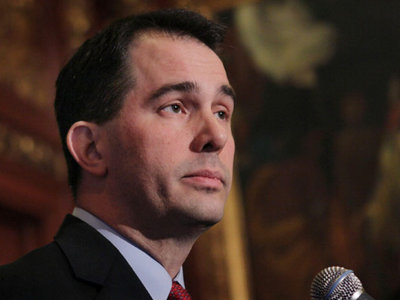Over the last few weeks, I’ve found myself coming back often to this piece I wrote for SchoolMattersMKE a few years ago now. I wrote in response to a U.S. Census Bureau report that said the Milwaukee Public Schools had the fourth-highest per-pupil spending among large districts in the country, and the inevitable reaction from anti-MPS folks that this was horrible! MPS is a cesspool and look at all the money we’re flushing into it!
Writing then, I tried to offer some context – MPS was not even the highest-spending district in Milwaukee County, not even in the top 25 in the state, only barely in the top 20 percent of all districts nationwide according to the Census Bureau.
And besides, I wrote, the high spending in a high-poverty district like Milwaukee is just one way to make up a part of what I call the resource gap. Unlike in high-income neighboring districts, many of Milwaukee’s children miss out on science camps, ballet lessons, family car trips to national parks, and other things that contribute to a fully developed child in a middle-class or wealthy family. We spend a little more at school to try to make up for that deficit.
But that cesspool sentiment is back. There’s a lot of talk of wanting to spin off a few dozen or more MPS into a recovery district of charter schools either right now – a proposal from two suburban legislators – or after a few years – the state Assembly’s school “accountability” bill. In response online, people are supporting the ideas, since MPS has, they say, the highest spending in the state and gets such dismal results!
And again I have to explain, no.
Late last week, though, new data were released from the National Center for Education Statistics reflecting changes under Gov. Scott Walker’s first budget, the one that dramatically cut funding for schools across Wisconsin, including tighter revenue caps on top of lower state aid. Where the Census Bureau report covered the 2009-10 school year, the new report covered 2011-12.
The headline number – literally – in that report was that school spending across the state was down, which should have surprised no one. More interesting to me was that among big districts across the country, MPS fell out of the top ten, with more than $1,200 less per student being spent between 2011 and 2012 according to NCES.
The NCES report, unlike the Census Bureau report, didn’t include every district in the state for comparison, let alone the whole country. But a quick trip to the Wisconsin Department of Public Instruction’s website gave me not just 2012’s data but also 2013’s for Wisconsin, albeit with a slightly different method of calculation.
But the same thing holds true: MPS is not the biggest spender in the state (by one measure, it’s 70th out of 425, and only fifth in Milwaukee County). DPI data show many of Milwaukee’s neighbors have weathered the Walker cuts much better than MPS has; Brown Deer, for example, was spending more per student in 2013 than it did in 2010, and the same is true at Maple Dale-Indian Hill, where spending is up more than $1,000 per student over those four years.
I write this not to beg pity or make excuses for MPS, merely to point out that MPS was never the biggest spender in the state, and the cuts since Walker’s first budget have had a real impact on the resource gap.
But Walker’s K-12 spending cuts were, we know now, just the first salvo in a larger war on Wisconsin’s poor. What followed included his refusal to accept the Affordable Care Act expansion of Medicaid, a cut in low-income tax credits, and more. His most recent budget proposals, to be announced officially this week but leaked well ahead of time, include paring back unemployment benefits and, most dramatic of all, a 13 percent budget cut to the University of Wisconsin system.
It’s hard to imagine the effects of such a cut: tuition hiked, programs eliminated, admissions reduced, research and innovation put on hold.
Walker naively believes that the cut wouldn’t hurt, since, in his words, faculty can just teach more classes and do more work for no more pay. Apparently he believes that, like those lazy K-12 teachers with their summers off and their Buicks and their health insurance, those lazy university faculty, too, are somehow getting over on the taxpayers of Wisconsin.
While I worry for my higher-ed colleagues if this cut goes through, I also worry for my students. Every year, dozens of them make their way to the UW system after graduation, both flagship campuses like UW-Madison and UW-Milwaukee and smaller ones like UW-Parkside, a particular favorite for Milwaukee students.
The opportunities my students get at these world-class institutions are simply unavailable to them here in MPS and in their everyday lives at home in Milwaukee’s poorest neighborhoods. The consequences of shutting out young Milwaukee men and women from the UW system, because of dramatic budget cuts at the hands of Scott Walker, would be devastating for this city and the state overall – it would significantly increase the resource gap.
As conservatives never tire of telling us, a good education is a ticket out of poverty. Why is it then that they never tire of slashing education budgets, demeaning those who teach, and putting opportunities and resources so much further out of reach for those in poverty?


 i evaluate to yes even if there's no image
i evaluate to yes even if there's no image  i evaluate to yes even if there's no image
i evaluate to yes even if there's no image  i evaluate to yes even if there's no image
i evaluate to yes even if there's no image  i evaluate to yes even if there's no image
i evaluate to yes even if there's no image  i evaluate to yes even if there's no image
i evaluate to yes even if there's no image  i evaluate to yes even if there's no image
i evaluate to yes even if there's no image 